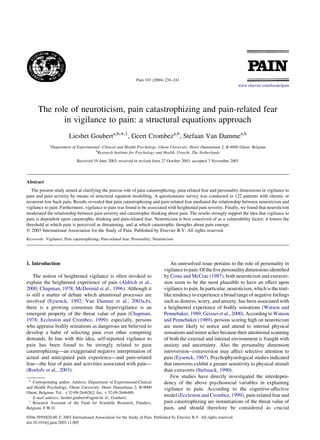This document summarizes a study that examined the relationships between neuroticism, pain catastrophizing, pain-related fear, and vigilance to pain in patients with chronic low back pain. The study found:
1) Pain catastrophizing and pain-related fear mediated the relationship between neuroticism and vigilance to pain.
2) Vigilance to pain was associated with heightened pain severity.
3) Neuroticism moderated the relationship between pain severity and catastrophic thinking about pain, such that high neurotic individuals who experienced more severe pain were more prone to catastrophic thinking.
The results support the idea that vigilance to pain depends on catastrophic thinking and pain-related fear, and that







